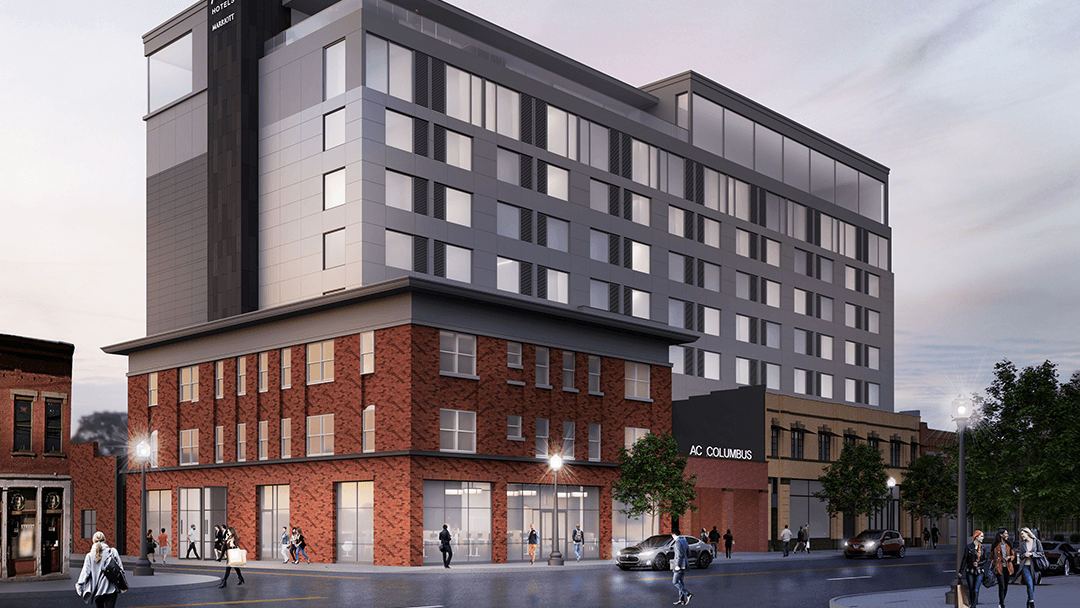
As green initiatives continue their rise nationwide, hotel owners and developers are increasingly recognizing the many financial and environmental benefits of clean energy. According to a recent ULI study, these initiatives increase property values by boosting net operating income and help to attract occupancy in modernized buildings. However, coming up with the upfront capital for these large-scale projects can seem daunting for property owners and developers.
This is where Commercial Property Assessed Clean Energy (“C-PACE”) meets the gap with a new option for owners and developers of hotels to fund up to 100% of energy-efficient and renewable building upgrades and new construction on a non-recourse permanent loan basis.
C-PACE is enabled through a public-private partnership enacted by state or local municipality law and is funded entirely by private capital providers. The funding is earmarked solely for energy-related improvements such as water conservation, seismic resiliency, renewables (e.g. solar power and storage), lighting, mechanical, plumbing, elevator upgrades and HVAC efficiency along with all related soft costs (e.g. permitting, etc.).
C-PACE enables flexible, long-term and inexpensive capital; works well alongside most other financing tools; and can complement pre-existing financing and development strategies. Because C-PACE funds up to 100 percent of the hard and soft costs of hotel commercial building upgrades and construction elements that improve energy performance, this financing is becoming increasingly sought-after for hotel new construction, rehabs, PIPs and run-of-the-mill retrofits. The projects financed with C-PACE are achieving strong increases in return on equity as well as dramatic decreases to their overall weighted average cost of capital given the unique attributes of this financing mechanism. These are two critical metrics for anyone in the industry. Funding is capped at 20%-35% of the stabilized appraised value of the property and DSCR of 1.25x.
Unique to the C-PACE program is that these funds are repaid through the tax assessment system as a special benefit. Many states now enable the same governmental taxing authority for private use, as they recognize that these energy improvements have an overall public good as a result of increasing energy efficiency. Each owner’s tax bill will have the annual required C-PACE debt service as a separate line item that is due and payable along with the annual municipal property tax assessment, like an annual sewer assessment. The assessments are like loans, in that they allow a property owner to pay off debt in installations over a long period of time. However, C-PACE assessments are not legally considered loans, rather it is a lien that provides strong collateral in the event the owner defaults on the assessment. Because the assessment lien is tied directly to the property, it can be transferred upon sale.
In essence, the program enhances the credit of your asset because C-PACE looks a lot like low risk municipal debt. C-PACE lenders are then able to offer repayment terms that are not available anywhere else in the capital markets, which enables owners to benefit from lowering capital costs while at the same time reducing operating costs through the energy efficient improvements financed. The competitive features of C-PACE financing include:
- The assessment can finance up to 100% of eligible energy-related improvements thereby limiting the up-front cash payment.
- The term and amortization of the financing is coterminous with the life of energy improvements enabling a longer, more affordable repayment term up to 30 years.
- The interest rate is fixed at the initial funding so that future interest rate increases that could impact the ability to pay the annual debt service are no longer a concern.
- The repayment terms are non-recourse meaning that the owner does not have to repay the balance of the financing in the event of a default scenario. Instead, the assessment contract stays with the property and can NEVER be accelerated (called due) so it provides a secure structure that works well alongside most senior lenders.
- The C-PACE assessment contract is pre-payable at any time. Typically, the financing has a simple exit fee in the first 5-years, but it is not subject to a complicated and potentially expensive yield maintenance fee.
- There are no financing covenants and the financing is off balance sheet.
- C-PACE fills potential equity gaps in development capital stacks and reduces the cost of capital, as C-PACE financing is approximately 50 percent less expensive than mezzanine debt. This can dramatically improve the financial returns of the project.
- The financing has a transparent and rapid approval process that is a boon in high barrier-to-entry markets, which are regulation heavy and can typically face significant delays (i.e. in contrast to Community Facility District or other types of bond financing).
- As with mortgages, the interest is tax-deductible for owners, although the principal is not. The improvements may also qualify for first year bonus and accelerated depreciation via cost segregation.
- PACE assessments are fully transferable with no qualifying or approval process, which leaves open the possibility for property owners to recoup their investment upon sale.
Clean energy is an essential focus for today’s commercial property owners and developers, as building codes become increasingly strict and energy-efficient solutions become a requirement. As developers aim to tackle these challenges, the ability to finance green initiatives can often be one of the most strategic financial decisions an owner or developer can make. C-PACE financing can prove to be an important and beneficial source of capital that makes energy-efficient solutions more financially attractive. C-PACE financing fills equity gaps in development capital stacks; requires little-to-no money out of pocket; allows a 20+-year payback period; reduces utility bills; and provides numerous tax benefits to owners and developers – all enabling great returns for property owners and developers.
View a Hotel New Construction Case Study


